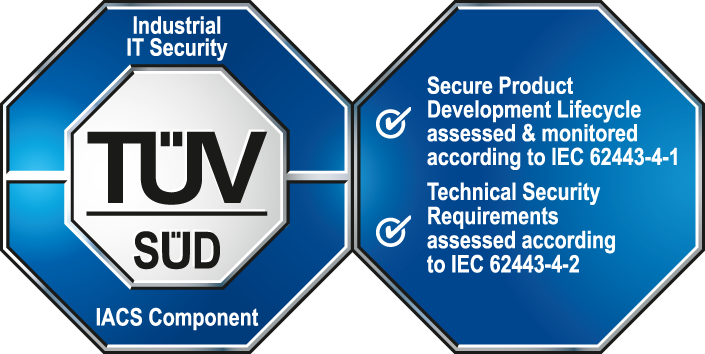Communication Services
The IEC 61850 standard defines an abstract data model and an Abstract Communication Services Interface (ACSI), which defines how this data model is mapped to communication protocols. The communication protocol used by the client is the Manufacturing Message Specification (MMS) transmitted over TCP.
The WinCC OA IEC 61850 client currently does not support generic substation events, sampled measured values or log control blocks. Please refer to the Conformance Statement of the WinCC OA IEC 61850 client for the supported Abstract Communication Services Interface (ACSI).
The communication services supported by the WinCC OA IEC 61850 client are as follows:
- Datasets
- Report control blocks
- Control
- Time synchronization
- File transfer
Datasets
A dataset is an ordered collection of dataset members.
Report control blocks
A report control block (RCB) service describes the condition for generating reports at device level, based on the parameters set by the client. A report control block provides the basis for the WinCC OA unsolicited communication. Transmission of data is defined by the trigger options of the RCB. The data transmitted is defined by the dataset assigned to the RCB.
Control Services
The control services are required to control the data objects required for write operations. The standard defines four models associated with the control services:
- Direct control with normal security
- Direct control with enhanced security
- Select before operate control with normal security
- Select before operate control with enhanced security
Time Synchronization
The IEC 61850 standard includes a time synchronization service which uses the standard SNTP protocol for synchronization. Other time synchronization services may be chosen to meet different accuracy requirements.
File Transfer
WinCC OA supports the download of files in the IEEE COMTRADE format. The service is designed for retrieving disturbance record (DR) files from a device. The files are usually available in the COMTRADE directory of the device. Three different file extensions (hdr, cfg and dat) are used depending on the file format.



